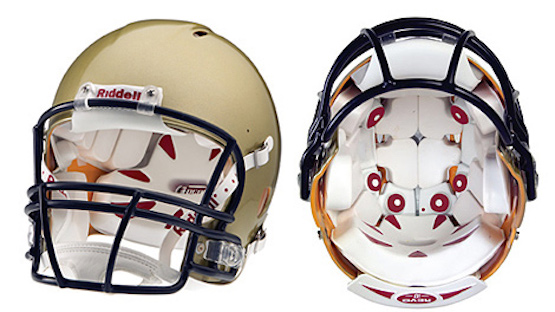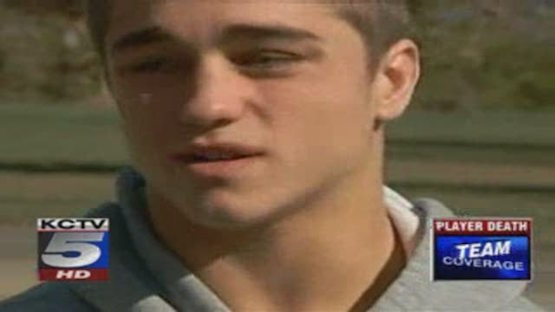Some of you may recall my piece last year about youth sports and football…
Rereading it might provide some valuable background for this offering.
The topic today is the effect the concussion scare and media focus on football as a result, is having on youth football. Youth football means tackle football from 2nd through 8th grade but many area school districts wait to go into school ball until after the 6th.
Full disclosure: There’s a ton of information out there and I’m certainly no expert.
I am however a long term volunteer in an area youth football league that has tried to address the issue and, basically, survive the current environment.
A class action lawsuit against the NFL by hundreds of former players regarding head trauma has resulted in intense focus on the sport from top to bottom.
NCAA, NAIA, College Conferences, high schools and youth leagues are all caught in the cross hairs trying to react. Part of the problem, however, is there’s very little definitive research data on which to base a path forward.
Medical science can’t even agree on what causes concussions, how to recognize/diagnose them or what to advise patients.
Basically a concussion is the brain bouncing off the inside of the skull.
A blow to the head itself is not required. First I’m going offer a brief overview from the youth league perspective and then my own personal view.
One of the best tools available to youth leagues now is the ImPACT testing model. ( http://www.impacttest.com) It is a neurocognitive ability measurement test that kids can take online. It takes about 20 minutes and is similar to a computer game. The test measures the individuals ability to think clearly and correctly respond to questions focused on memory, response time, recall of sequences, shapes, colors, numbers, etc.
Having all of the kids take the test prior to the start of a season establishes a baseline for parents and physicians to refer back to if a concussion is suspected. However the doctors and sports medicine people we talk to don’t think the current testing model is very effective for kids below about 5th grade. And while tests for younger kids are being developed, we’re not there yet. We’re not even sure younger kids could sit still long enough for the test to give a valid reading.
If a concussion is suspected, having the player retake the test and comparing the two scores provides a much more accurate tool for the doctor to use to diagnose.
Doctors tell us that even CT scans and/or MRIs are not completely trustworthy in diagnosing. Each injury and each child is unique to a great degree. The ImPACT test both before and after is a great tool to help doctors make a correct diagnoses and also additional testing and comparison of scores can let parents and doctors know when it’s safe (maybe safer’s the better word here) to return.
It could be a week, a month or the season.
With some parents and kids, they will never return but that’s often a more fear driven than medical decision. Rarely is the first concussion fatal but returning to contact too soon and suffering a second concussion before the first one is healed is extremely dangerous.
We’re told that overwhelmingly with youth league kids, a concussion is like other bumps and bruises and the brain can heal well with time and adjustment to that young person’s short term lifestyle. That usually means no computer or cell phone use, and maybe no school work, Kids are not always honest about what they are feeling and also may not recognize that things like headaches, sensitivity to light or noise might indicate a problem. Unfortunately, there are some parents that don’t respect the danger and are so competitive that they want their child back on the field immediately.
 A second focus of youth leagues should be helmets.
A second focus of youth leagues should be helmets.
Contrary to what some may think, there is no helmet that can completely protect a player from a concussion. Riddell (www.riddell.com) is the 800 pound gorilla in the room as far as helmet mfg., but companies like Xenith, Schutt, and others are also doing great work in helmet design and safety. NOCSAE ( http://nocsae.org ) is the organization that tests helmets and their approval of a helmet model is required, but again, just because they passed a helmet model does not mean a kid wearing it is safe from concussion.
The best helmet is one that fits properly.
Do NOT trust a salesman at the sporting goods store to properly fit a helmet. I’d say about half the helmets parents buy for their child and then bring to us to check are rejected because of an improper fit.
Helmets need to constantly be checked for cracks, leaking air bladders, missing screws, clips, etc. They also need to be reinspected after each year (really after each game by the parent) and sent back for recertification about every 2-3 years. Some may need recertification annually. Life span should not exceed 10 years regardless of recertification and a large percentage are removed from service well before that time.
There are helmets made that can have sensors attached that measure the force and specific location of a helmet hit and signal coaches of a potential concussion but no youth league could afford it. Very few parents could either.
Leagues need to stress training and safety to coaches.
Training clinics for all coaches, not just head coaches. USA Football (www.usafootball.com ) is the national governing body for youth football and they do a good job in working closely with youth leagues that are members. USA Football is a fantastic resource for youth leagues. They are very focused on safety and teaching proper techniques on tackling, blocking, etc.
Reducing the amount of contact that takes place in practice is a step youth leagues should be, and are taking.
There are a number of leagues in the metro area and many of them do a pretty good job. Leagues need to work very closely with their officials and have them be proactive in warning players about questionable hits and flag spearing, tackling the head, and other dangerous actions. It’s easier to monitor safety during the game with additional eyes on the action, and the presence of Med-Act in the complex for some leagues is a big help, but monitoring practices is much more difficult. Each coach and team needs a plan in place.
 And when in doubt, sit him out.
And when in doubt, sit him out.
The concussion scare has had a very negative effect on the participation numbers in youth tackle football nationally and locally.
I think the local effect really hit here following the tragic death of Nathan Stiles, the high school football player from Spring Hill in 2010.
Stiles had suffered a concussion in a game earlier in the season but a CT scan did not detect it. The second concussion, suffered in a game a few weeks later, was fatal.
I’d say the participation numbers in youth tackle football here have dropped about 25% – 30% from that event to the present. Flag football numbers have increased and most leagues are extending their flag programs up to the 5th grade level where previously those leagues dropped flag after 1st grade and went to tackle. It’s a challenging atmosphere for youth tackle leagues.
That’s a brief youth league overview.
And while that’s merely scratching the surface, this piece is probably already too long.
I know many professional football players have expressed that they would not allow their own sons to play youth football and I respect that. Every parent needs to be an active advocate for their child and do what they feel is best for their child’s safety and development.
Personally I would have no reservations about recommending youth football to a parent with a child in that age range. They should be attentive to the issues I touched on above with the team their child plays for, but if the team and league their child plays for pays attention to those areas of concern, they should feel secure.
I mentioned earlier that I have been actively involved youth sports for over 20 years.
I coached my own children in football, baseball, and basketball. They participated in soccer and wrestling as well and I’ve been very active in the leadership of a couple of those leagues. I’m convinced that youth sports, when administered by adults with their priorities in order, are hugely beneficial for the development of our young people.
They can teach important life lessons like hard work, discipline, putting what’s best for the team ahead of what is best for the individual, how to win with grace and lose with class, respect for your opponent, respect for the officials, respect for the game, and good sportsmanship.
These are life skills that serve as a foundation for young people the remainder of their life, even if they never again cross that line onto a competitive sporting milieu. I think we’ve all come across adults in our own lives that never learned these lessons. I think football, because it’s a team sport with a large number of players on the field as well as the fact that it’s so demanding of kids on a number of different levels, teaches these lessons better than any of the others. Especially in teaching a young person self confidence.
I don’t know the answers here.
I understand the scrutiny and the parental concern. The game does need to change and the laser focused on player safety.
It’s just a very difficult time for youth football leagues and they need to be very proactive if they hope to survive and thrive once again.











Stomper….congrats on your new position…the rational/fact based writer on
kcc.
I work with many pro athletes and have done so over many years and when
my hero Joe Namath says he never would have played if he knew the effect
it would have on himin his later life he never would have played.
You are so right. The younger the athlete…the more possibility of
severe injury.
A good friend of mine has a son who was an mma champion in the big time
mma world. Many people have heard of him. He lost his championship about
a year ago. This sport is brutal…no matter dana white says about his sport.
You only need to see the tests done on these athletes to understand than many
come from football but mostly wrestling backgrounds. I counted the hard
hits taken in one of the contests and knew it was probably double the contact
taken in an average nfl game. They can say they’re doing research, studies etc.
but espn had a show I think was named sports science and they showed the
force of theblows in a mma event. It was shocking.
Americans love it though…the love Rhonda (but she has no competition except for
30-40 second) and as longas there is money tobe made its on and go.
But these young kids are at risk. undeveloped protection and the unknown effects
of concussions and hard hits make it even riskier.
Parents had better be more careful with their kids activites. Todays young kids
are faster/stronger/bigger than the kids we faced in the 70/80 period.
Not only have we screwed up the world for this next generation but we’re
screwing with their brains.
Ive seen what damage is done. Its not like dana or the nfl owners reallycare.
Its the money stomp…and as long as live sports is taking over the media (allthe
media) it will continue to be about the money.
I would bet that 1/3 of the current chiefs will suffer serious trauma later in
life.
Spoke several weeks ago with oe of the great chiefs defensive linemen…he’s
having serious problems.
But it won’t stop…there’s just too much money for guys like kraft and hunt to
be made….they’re in it for dollars. No matter what they say…you can do all the
research you want but they’re stringingout the tests as long as they can..
they know the truth and it ain’t pretty.
Harley has seen what’s going on. Nice article.
Good luck
la haim (did I spell that right)
Harley
just recently a young ball boy got hit in the headwith a bat.
can you see if he was wearing a batting helmet (which most do) when he got
hit in the head and died.
I’d love to see the tests done on him and the impact the bat took on him.
We’re doing a shittty job protecting kids today…what are we? barbarians?
If you are referring to the bat boy in Wichita this past weekend ( college aged teams competing in a tournament ) , yes, he was wearing a batting helmet but he accidently walked into the practice swing of a player in the on deck circle that did not see him walk up. Tragic accident but not the result of continuous or normal activity of the sport. I think we are doing a far better job of protecting our young people now than we used to but the safety of our children should always be paramount.
While I agree with everything you wrote, it is worth repeating, concussions are no joke. I was concussed in the ring many years ago and then again about 15 years ago. The vertigo this last time, stayed with me for about 18 months. Unexpected losses of balance, vertigo, headaches and blurry vision were problems that I thought for a while, might never go away.
No, of course, I didn’t go see a doctor.
My kids played tennis, baseball and were on the swim team.
Nice article.
so getting hit in the ring explains why you use the language you use
on kcc and tonys blog.
excuses…excuses.
didn’t see a dr? Now under obamacare you could see a dr. and not
have those problems.
Why do you people act like this. Do you not get it.
So that explains some of the pitiful post you make. Punch drunk old fool.
American football is an artifact of our culture of violence, overly imbued with machismo masquerading as maturity. It is slowly being jettisoned by thinking parents in favor of almost anything else, though soccer seems to be the flavor of the moment.
According to an article published in 2013 in The national Academies of Sciences·Engineering·Medicine , girl’s soccer has the 2nd highest concussion rate in high school sports.
Indeed, there is a movement afoot to ban ‘headers’ for all youth leagues; not only are children not coordinated enough to head a ball properly, but heading increases the risk of injury to both player and opponent. I ref a couple of leagues in town where this has already been instituted.
The schools are traditionally slower to adopt these changes like, but it’s already happening.
Children below puberty should not be playing tackle football. Their bodies are not designed for those types of loads and impacts.
One of the problems with the safety equipment now is it is almost too good. Players cannot “feel” their impacts and so do a lot of damage.
Dude has a good point about injuries. A child breaking a bone on a growth plate could have major problems the rest of their life. Of course that can happen in non-sports injuries as well.
The biggest safety factor is the coach.
And fitting a helmet isn’t something people think about. Fitting a helmet is more complicated than people realize. An ill-fitting helmet can be more dangerous than no helmet.
Kids played lacrosse rather than football. Helmets aren’t designed for contact as much as football helmets. As much safety as the new helmets provide they also give a false sense of being invincibility.
Once again, Orphan, you display a high level of acumen across a wide spectrum of topics.
Fitting a helmet properly involves acute attention to a number of areas of the head. One does not consider the variety in the shape of the human head until you try to properly fit a helmet and if you are using a helmet without air bladders, you are already behind the eight ball. Even if the helmet is fit properly in the beginning, adjusting the air pressure with an incorrectly sized needle can easily puncture a bladder, which renders the helmet to be dangerous. It happens quite frequently and they are expensive to replace.
I can’t speak for the pro level or the college level but we do work with a number of players from our program that compete in high school and I continue to be amazed at how poor the quality of equipment ( helmets and shoulder pads) is and how poorly it is often fit onto the player at the high school level. If your child plays football, you need to be laser focused on the ongoing fit of the equipment your child wears.
You also nailed it with your comment on coaches and their role in the safety of the players. If the coaching staff of the team and the leadership of the league where the team competes does not take a proactive role in high quality and properly fitting gear, and continue to monitor it throughout the season, the safety of the player is severly compromised.